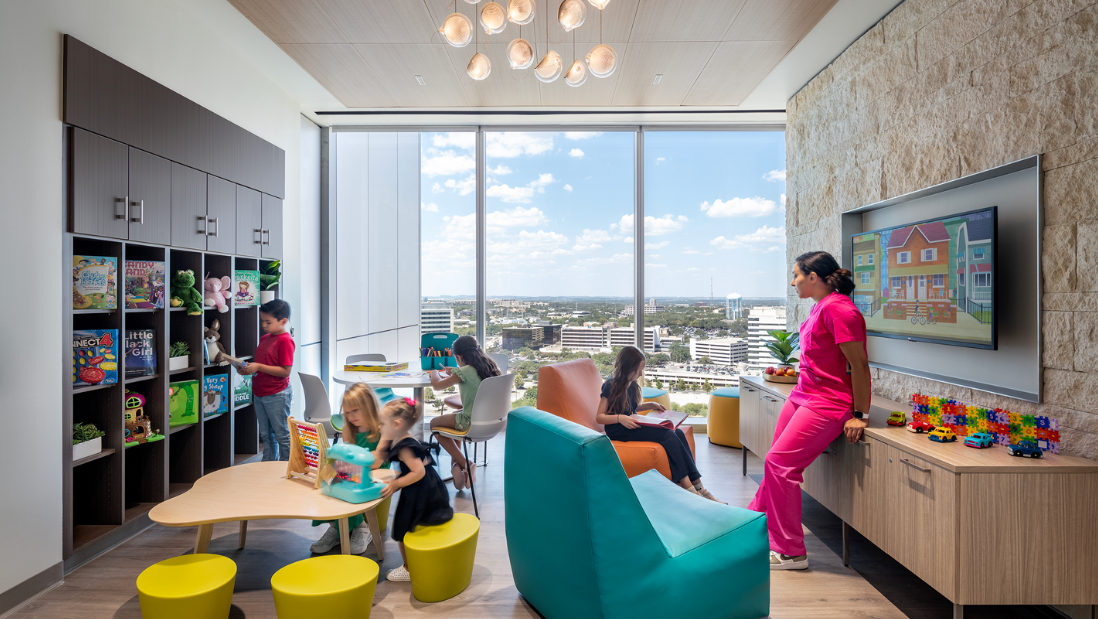

Introduction
Imagine stepping into a home that instantly calms your nerves, lifts your mood, and promotes clarity of thought. This isn’t just about having a beautiful space—it’s about designing with intention. Neuroarchitecture is a groundbreaking field that explores how the built environment affects our brains and emotions. As stress, anxiety, and overstimulation rise in modern life, home remodeling is evolving to focus not just on aesthetics or function—but also on mental well-being.
In this in-depth guide, we’ll explore how you can apply neuroarchitectural principles in your home remodeling projects to create a living space that supports emotional health, mindfulness, and cognitive performance.
Chapter 1: What is Neuroarchitecture?
Neuroarchitecture is the intersection of neuroscience and architecture. It’s based on research that reveals how physical spaces influence brain activity, hormone levels, behavior, and mood. While the term may sound highly academic, its principles are incredibly accessible and increasingly used in home remodeling to improve wellness.
Key Concepts:
Biophilic design: Connecting humans with nature.
Spatial organization: How layout affects movement, focus, and stress.
Lighting & color: How these environmental cues affect circadian rhythm and mood.
Sensory design: Creating harmony between visual, auditory, tactile, and olfactory elements.
Chapter 2: Layouts that Soothe the Mind
1. Open Floor Plans with Boundaries
Open layouts reduce visual clutter and foster freedom of movement—but too much openness can create cognitive chaos. Use elements like bookshelves, rugs, or plants to subtly define zones without building walls.
2. Mindful Flow
Design pathways with intuitive flow, minimizing abrupt corners or dead ends. A well-considered circulation path makes moving through your home feel natural, which reduces stress.
3. Quiet Zones
Incorporate retreat spaces—reading nooks, meditation corners, or cozy dens—designed for decompression and solitude.
Chapter 3: Natural Light, Artificial Light, and Circadian Rhythms
Lighting profoundly affects our body’s internal clock, or circadian rhythm, which regulates sleep, mood, and alertness.
Tips for Neuroarchitecture Lighting:
Maximize natural light with skylights, large windows, or light wells.
Use smart lighting that mimics daylight cycles—bright, cool tones in the morning and warm tones at night.
Avoid harsh fluorescents; opt for diffused, indirect lighting to reduce eye strain and irritability.
Install dimmers to let occupants control ambiance and stimulation.
Chapter 4: The Psychology of Color
Color is not just decorative—it’s deeply emotional. Neuroarchitecture uses color to regulate psychological states.
| Color | Psychological Impact | Best Room Types |
|---|---|---|
| Blue | Calming, lowers blood pressure | Bedrooms, bathrooms |
| Green | Restful, associated with nature and balance | Living rooms, studies |
| Yellow | Energizing, boosts creativity | Kitchens, creative workspaces |
| Neutral tones | Grounding, promotes clarity and peace | Entryways, meditation spaces |
| Dark hues | Can be cozy or oppressive depending on context | Accent walls, media rooms |
Note: Personal reactions to color may vary, so customization is key.
Chapter 5: Materials that Touch the Soul
Textures and materials can trigger subconscious responses.
Natural materials like wood, stone, and clay evoke calm and earthiness.
Soft textures like velvet, wool, and cotton add warmth and comfort.
Cool textures like metal or glass can be used sparingly for contrast and modernity.
Acoustic panels or cork walls can reduce noise pollution and auditory stress.
Avoid overly reflective or synthetic materials that can feel sterile or overstimulating.
Chapter 6: Biophilic Design – Bringing Nature Inside
Humans have an innate need to connect with nature—a concept called biophilia.
Ideas for Biophilic Home Design:
Indoor plants that clean the air and add life.
Living walls or vertical gardens for visual and emotional wellness.
Water features like tabletop fountains to introduce soothing sound.
Natural color palettes inspired by forests, oceans, and earth tones.
Views to the outdoors, framed by windows or even mirrors reflecting nature.
Biophilic elements help lower cortisol levels, enhance focus, and boost recovery from mental fatigue.
Chapter 7: Sound, Silence, and Acoustic Comfort
Unwanted noise is a silent stressor. Neuroarchitecture emphasizes controlling sound to reduce mental fatigue and emotional discomfort.
Sound-Smart Renovation Tips:
Use rugs, curtains, and soft furnishings to absorb noise.
Add soundproofing between walls or floors for privacy and tranquility.
Install white noise systems or natural sound machines in bedrooms or quiet zones.
Choose quiet appliances and soft-close cabinetry to minimize sudden noises.
Chapter 8: Personalized Spaces for Emotional Wellness
Every individual’s neurological response to space is unique. Customization is the secret ingredient.
Let bedrooms reflect the occupant’s favorite colors, scents, and textures.
Incorporate sensory zones tailored to neurodivergent family members.
Use adjustable lighting, sound, and temperature for personal control.
The most mentally healthy homes are the ones that reflect the personalities and emotional needs of the people living in them.
Conclusion: Designing for the Mind, Not Just the Eye
Neuroarchitecture offers a powerful way to approach home remodeling—not just as an aesthetic exercise, but as a tool for emotional health and cognitive balance. Whether you’re renovating a single room or your entire home, considering the psychological impact of design will help you build a sanctuary for the mind and body.
As our understanding of neuroscience and architecture continues to grow, the future of home design will be more intuitive, more empathetic, and more human-centered than ever before.
Recent Posts
- 🌿 Eco-Friendly Holiday Celebrations: 10 Sustainable Ways to Make the Season Special
- Cozy Holidays at Home: 10 Creative Ways to Make This Season Magical Without Traveling
- DIY Holiday Bliss: Easy Projects to Make Your Home Cozy, Warm & Festive
- Holiday Glow-Up: Simple DIY Projects to Transform Your Home into a Festive Wonderland
- The Ultimate DIY Home Remodeling Guide: 30 Transformations You Can Do Without Hiring a Professional
Recent Comments
Categories
- Blog
- Budget-Friendly DIY
- Careers
- Crafts and Hobbies
- Decor and Design
- Design
- Featured Post
- Holiday and Special Occasion Projects
- Home Improvements
- Home remodeling
- Innovation
- Inspiration and Ideas
- Lifestyle
- Outdoor Projects
- Step-by-Step Tutorials
- Technology
- Tips and Tricks
- Tools and Materials
- Travel
- Uncategorised
Search
Recent Post
🌿 Eco-Friendly Holiday Celebrations: 10 Sustainable Ways
- 29 November 2025
- 6 min read
Cozy Holidays at Home: 10 Creative Ways
- 29 November 2025
- 3 min read
DIY Holiday Bliss: Easy Projects to Make
- 28 November 2025
- 6 min read







